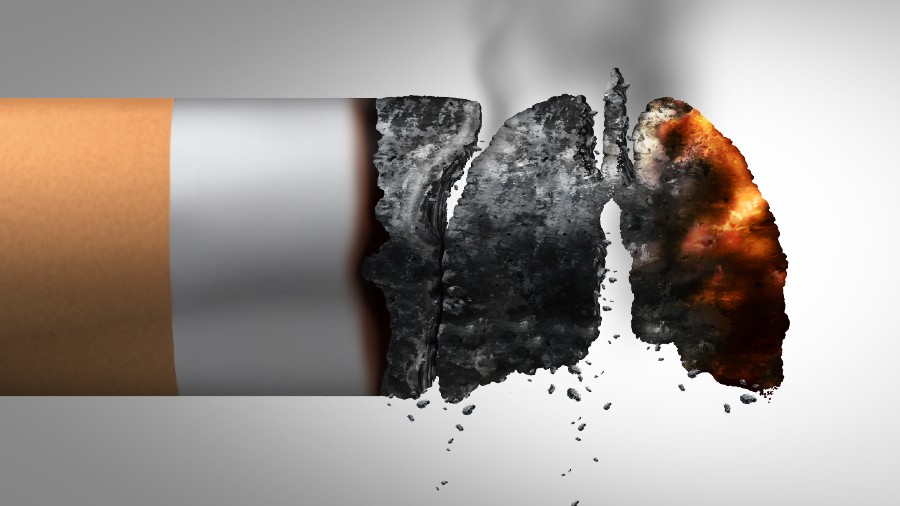In India, seven per cent of cancers occur in the lungs. This is really a pity because, unlike other cancers about whose cause and effect we can only speculate, lung cancer shows a direct relationship with smoking. The risk increases if the person starts smoking at a young age. It also increases with the number of cigarettes smoked. It is not just cigarettes that cause cancer, tobacco used in any form such as beedis, cigars, pipes and even inhaled through a hookah carries a high risk.
Burning tobacco releases a host of chemicals such as benzene and formaldehyde. These are responsible for initiating changes in the lungs that lead to cancer. The risk is aggravated by the paper in which the tobacco is rolled. Unfortunately, it is not the smoker alone who is at risk. Family members (spouse, children, parents) living in the same environment are also forced to become second-hand smokers. They inhale the cigarette smoke exhaled by the smoker. Even people who smoke outside the house bring in smoke on their clothes and skin.
Although lung cancer can occur at any age, it usually manifests around the age of 65. Prolonged exposure to other pollutants such as diesel exhaust, smoke from wood fires and asbestos dust can be contributing factors in non-smokers.
The symptoms of lung cancer can be obvious — such as a cough with blood-stained sputum without a fever. There may be breathlessness and rapid laboured breathing. There may be loss of weight and appetite. In some people, the cancer cells produce hormones that cause weight gain and swelling of the body. The face may be puffy and swollen. In short, any sudden rapid unexplained change in weight has to be taken seriously and investigated. These hormones can also push fluid to the fingertips, making them puffed out so that they have a parrot-beak appearance. The cancer can increase blood calcium levels, causing stomach discomfort and body aches and pains. There may be no chest pain at all, but there may be pain in the shoulder neck and arms. There may be loss of balance. Vision may be affected. One eyelid may droop. Anaemia may set in rapidly, causing fatigue. Blood clots may suddenly appear in various parts of the body.
The presence of any of these symptoms should raise a red flag. Other diseases can also cause similar symptoms, so sometimes the diagnosis may be missed. If the person is a smoker or has had long-term exposure to second-hand tobacco smoke or industrial and other pollutants, investigations are required. Scans, X-rays and sputum examinations will usually give the diagnosis. Biopsies may be needed.
To prevent lung cancer:
⦾ Do not smoke. If you are a smoker, it is never too late to stop. The risk decreases when you stop smoking from 14 to seven per cent. If you stop smoking early enough, the damage to your lungs can be reversed.
⦾ Reduce exposure to pollutants by not using wood or kerosene for cooking. If you own a motor vehicle, try not to leave it idling. If you have been asked to wear a mask at your workplace, please do so.
⦾ Do not burn trash or tyres.
⦾ Eat 4-6 helpings of fruits and vegetables daily. This provides protective vitamins and antioxidants, which are more effective in the natural form.
⦾ Take steam inhalations daily to clear out pollutants from your lungs.
The writer is a paediatrician with a family practice at Vellore and the author of Staying Healthy in Modern India. If you have any questions on health issues please write to yourhealthgm@yahoo.co.in










